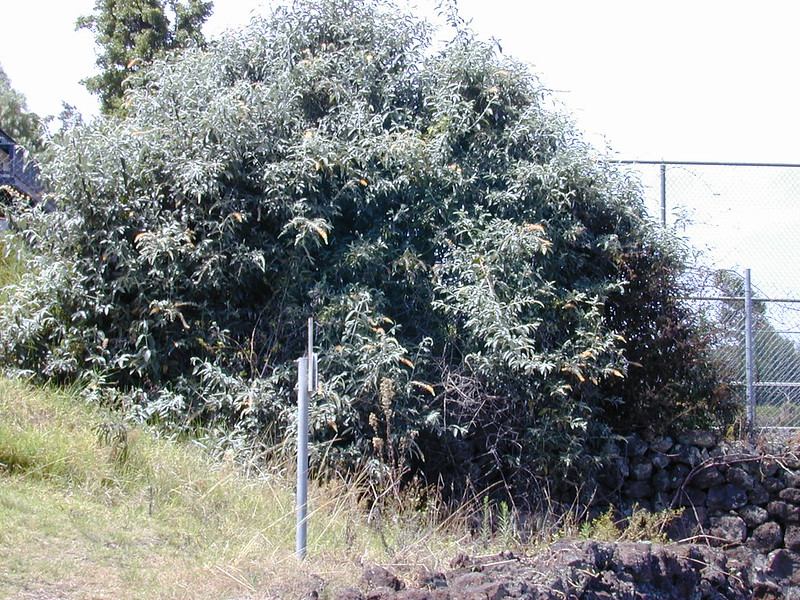
Smokebush
REPORT IF SEEN: Contact BIISC to schedule a free removal
Native to Madagascar, smokebush (Buddleja madagascariensis) was introduced to Hawaii as an ornamental plant. When it escapes cultivation, it grows aggressively and forms thick impenetrable thickets that can outcompete native vegetation. Besides animal spreading seeds, it can also regenerate from stem fragments.
Smokebush is recognized as an invasive species in Florida, Australia, South Africa, and the Caribbean. In addition, it is on the Hawai‛i Department of Forestry and Wildlife’s list, “Hawai‛i’s Most Invasive Horticultural Plants.”
Impacts:
- Aggresive invader of disturbed mid-low elevation areas
- Forms dense impenetrable thickets
- White powder that grows along the stem causes allergic respiratory reactions when disturbed
- Host for mealybugs
- Grows in dense, closed canopy forest
- Produces many bird-dispersed seeds
Description:
- An evergreen shrub with straggling or climbing branches
- Fragrant flowers forming slender clusters about 10″ long, orange, deep yellow to pink
- Leaves are greyish-green, alternate with distinct veins. The bottom of the leaves are white and hairy about 3-5″ long
- Amethyst purple colored fruits contain sticky pulp inside and numerous tiny seeds
- Can be found from sea level to 4,000 ft
Smokebush (Buddleja madagascariensis)
Photos: Forest & Kim Starr
BIISC’s Control Efforts
Since 2009, BIISC has been working to eradicate smokebush from Volcano, Puna, Waimea, Paauilo, South Kona. Great progress has been made. Mature plants are rarely found during surveys. Populations in natural areas are steadily declining. With the permission of the homeowner, cultivated plants have been removed in many private residences.



